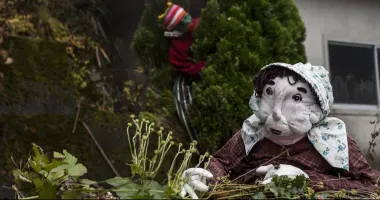Japanese Puppet Theater in Tokushima
- Published on : 25/02/2019
- by : Japan Experience
- Youtube
Japanese Puppet Theater in Tokushima: view puppet (bunraku) performances at the Awa Jurobe Yashiki Puppet Theater &; Museum in Tokushima, Shikoku.
Discovering Japanese Puppet Theater in Tokushima 阿波十郎兵衛屋敷
Jake Davies
Ningyo Joruri, a traditional form of Japanese puppet theater has been around for hundreds of years. Along with kabuki, it was a major form of popular theater entertainment during the Edo Period. Often called Bunraku, it features large puppets, and multiple on stage puppeteers for each puppet.
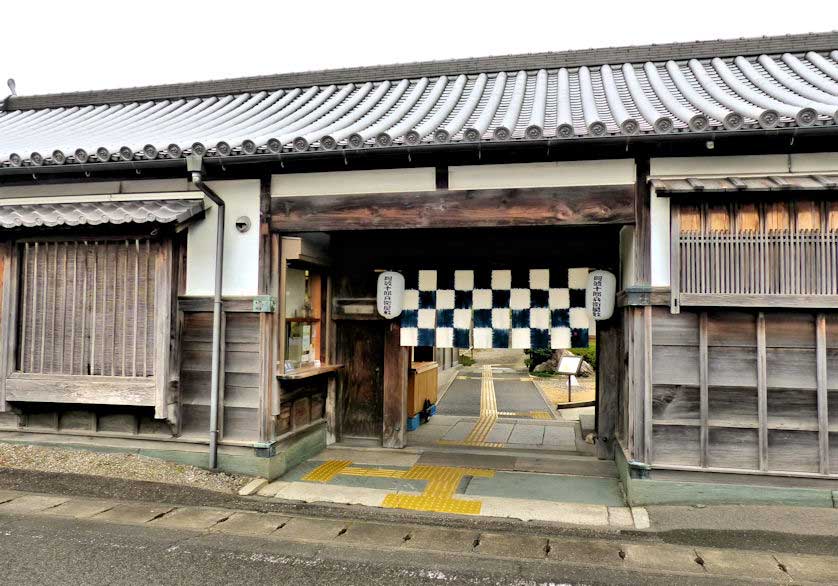 Entrance to the Awa Jurobe Yashiki Puppet Theater & Museum, Tokushima, Shikoku, Japan
Entrance to the Awa Jurobe Yashiki Puppet Theater & Museum, Tokushima, Shikoku, Japan
Bunraku
Ningyo means "doll," and joruri is a kind of chanted storytelling accompanied by shamisen. When the two were brought together in early 17th century Osaka, bunraku was born.
Bunraku grew in popularity largely due to the influence of the famous playwright Chikamatsu Monzaemon, sometimes referred to as the "Shakespeare of Japan."
Known mostly for his kabuki plays, many were actually written for puppets and later adapted for kabuki.
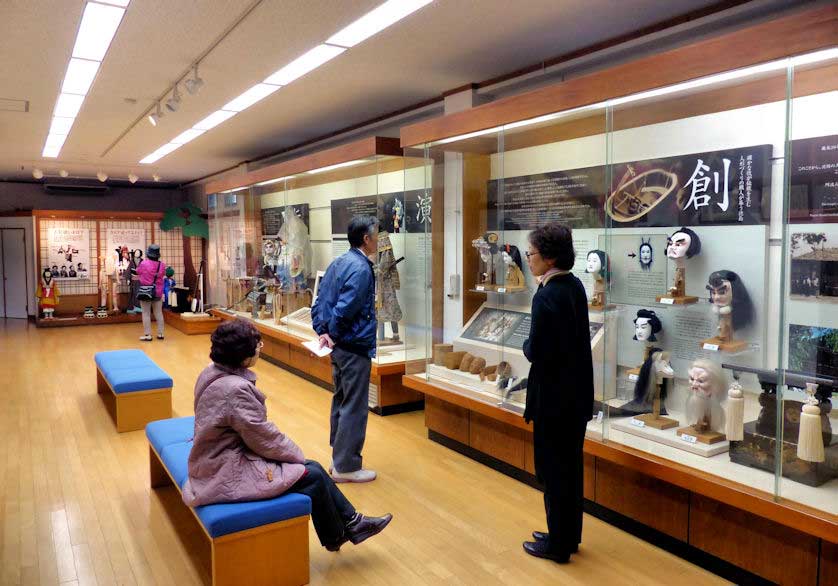 Displays in the puppet museum in Tokushima
Displays in the puppet museum in Tokushima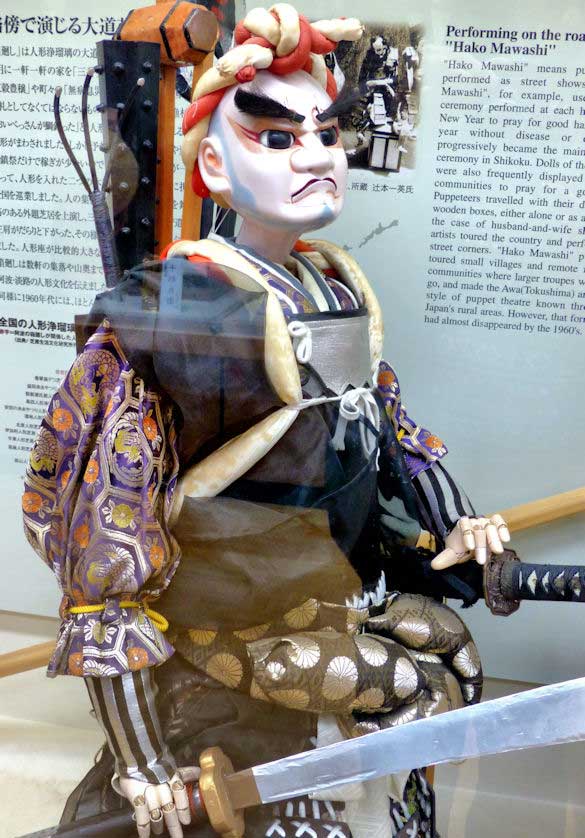 One of the large puppets on display at Awa Jurobe Yashiki
One of the large puppets on display at Awa Jurobe Yashiki
Bunraku was more popular in Osaka in the west of Japan (Kansai) than in Edo (Tokyo) and the east (Kanto), which is why the National Bunraku Theater is in Osaka.
One of the best places to see puppet theater nowadays is in Tokushima on Shikoku, where the puppet shows were particularly popular in the countryside. The puppets were also bigger here than in other parts of the country.
 A scene from a performance of Awa Puppet Theater. Each puppet has three operators
A scene from a performance of Awa Puppet Theater. Each puppet has three operators
Awa Jurobe Yashiki: The Tokushima Puppet Theater & Museum
The Awa Jurobe Yashiki in Tokushima city offers a convenient and inexpensive way of seeing some traditional Japanese puppet theater.
The theater is in the grounds of a traditional house and garden that belonged to a rich indigo merchant by the name of Bando Jurobe.
Before watching the performance it is worth having a look at the garden, a traditional Crane & Turtle design. There is also a museum with displays of puppets and related materials especially on the puppet heads which can be remarkably complex.
Most of the exhibits have information in English. You can also watch a video about Awa Ningyo Joruri, though the narration is only in Japanese.
The performance itself is of several scenes from the tragedy Keisei Awa-no-Naruto, and the main character is Bando Jurobe himself.
For performances on weekends and holidays the chanter, who supplies voices for all the characters, and the shamisen player sit in a separate space to the right of the stage.
On weekdays the accompaniment is recorded. After the performance the puppeteers come down from the stage with the puppets for photo-ops with the audience and chatting.
Access
Miyajimahonura-184, Kawauchicho, Tokushima-shi, Tokushima 771-0114
Tel: 0886 65 2202
Open 9.30 am to 5 pm. Closed over the New Year.
Entry is 410 yen for adults, 300 yen for high school and university students, 200 yen for younger children.
The theater is 25 minutes from Tokushima Station stand 7, on the Kawauchi Circular bus. The Tourist Information office near the station has a timetable.
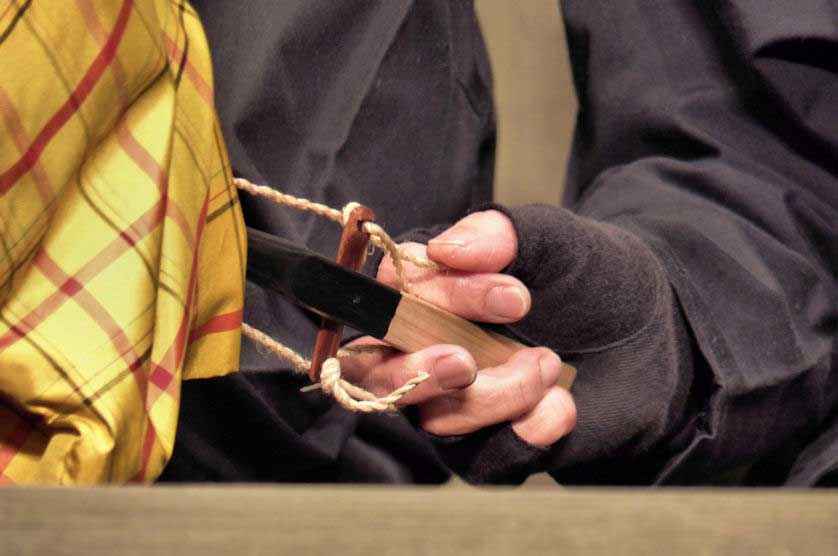 The mechanism for operating a puppet
The mechanism for operating a puppet
Awa Wooden Doll Museum
If you can't make it to the theater, or if you want to see more about Awa puppetry, then the Awa Doll Museum in downtown Tokushima is a must see.
Not at all well known and not included in most tourist information is this quite large exhibition of puppets and related materials and is completely free to enter.
It is located in Awagin Hall, a large culture center and auditorium along the river west of and about 600 meters from Tokushima Station.
A small entrance on the main street leads to elevators up to the fifth floor. There are several large galleries with many dolls, including some almost life size. Also on display are other materials including a replica of the backstage area of a rural puppet theater filled with costumes and paraphernalia.
One room has large photos of puppets photographed in a multitude of surroundings. There is probably as much on display in this museum than at the Awa Jurobe Yashiki, but there is no English information and no staff.
Access
2-14 Aibacho, Tokushima-shi, Tokushima 770-0835
Tel: 0886 22 8121
Open 9.30 am to 5 pm. Closed over the New Year.
Free entry.
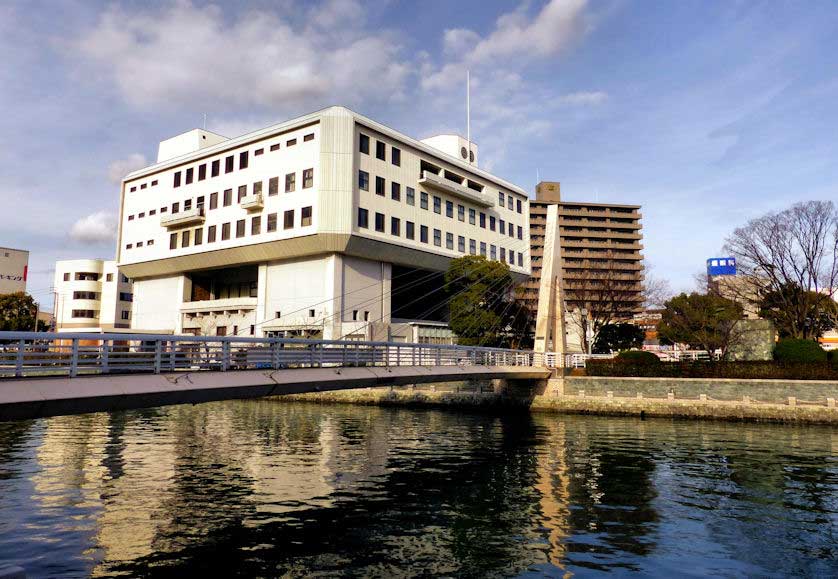 Awagin Hall, location of the Awa Wooden Doll Museum
Awagin Hall, location of the Awa Wooden Doll Museum
Tenguhisa Museum
For those with more than a passing interest in Japanese puppetry might want to visit the Tenguhisa Museum.
This was the home and studio of one of the artists who made the puppet heads in the early 20th century.
Traditionally the puppeteers themselves made the costumes and the main body of the puppet, but making the intricate heads was the job of specialized artisans. This was the work of Tengu Hisashi who was the third generation in his family.
You can watch a DVD of a TV program made about him and the volunteer staff can explain more, but it is quite interesting just to see the workshop left as it was when in use.
Access
172 Wada Kokufu-cho, Tokushima-shi
Tokushima 779-3121
Tel: 0886 643 2231
Open Thursday to Sunday from 9.30 am to 4 pm.
The museum is a short walk from JR Ko Station on the Tokushima Line. Tenguhisa Museum is not far from Kannonji and Idoji, the 16th and 17th temples on the Shikoku Pilgrimage.
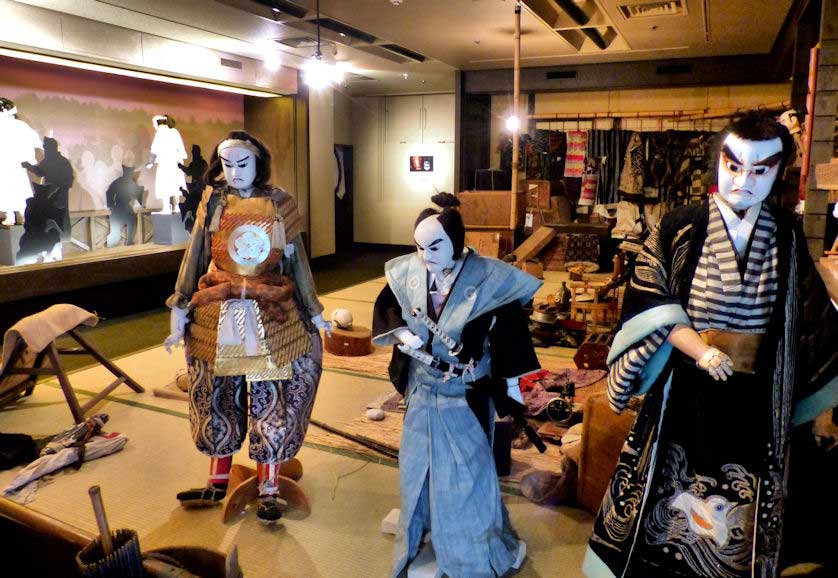 One of the rooms at the Awa Wooden Doll Museum in Tokushima
One of the rooms at the Awa Wooden Doll Museum in Tokushima




